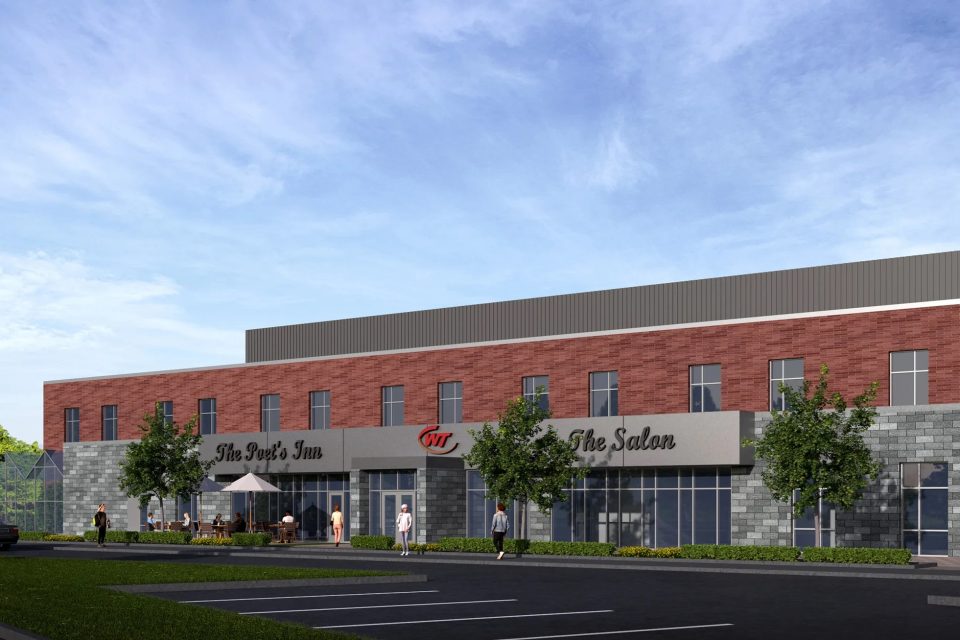REGIONAL – After seeing its proposed $446 million building resoundingly defeated last week, the Whittier Regional Vocational Technical District plans to move slowly in developing a new plan to replace its 50-year-old building.
“We will take time to reevaluate how we can best meet the needs of Whittier Tech’s students, and come together as a community to determine the best path forward to serve our students,” Supt. Maureen Lynch, on behalf of the Whittier Tech School Building Committee, wrote in a statement.
City and town officials hope Whittier will include them earlier in the redesign process, but believe the school’s first steps should be to rebuild relationships with them.
The election campaign turned ugly in the closing days as the “Yes” campaign attorney sent cease and desist letters to Rowley SelectBoard chair Clifford Pierce and other officials, demanding they stop using taxpayer funds to oppose the project.
Pierce denied that even one taxpayer-funded postage stamp was used.
In an almost two-to-one defeat, the voters in the North Shore cities and towns that make up the Whittier district cast 15,416 votes against the 5,644 for the project.
“It is clear that residents in 10 of our 11 sending communities are not in favor of the current proposal to construct a new Whittier Tech,” Lynch wrote.
The proposal was for cities and towns to fund more than $200 million for the building with most of the balance coming from the Massachusetts School Building Authority (MSBA), which agreed that the building has significant structural and operational challenges. Lynch has said her school, which educates 1,300 students, needs a new sprinkler system, wastewater treatment plant and new mechanical and electrical equipment. It also needs to make the building more handicapped accessible. Much of the equipment the students learn on is also outdated.
“We have to do something,” Lynch said repeatedly during the campaign about the building at 115 Amesbury Line Rd. in Haverhill.
Local officials acknowledged that the school needs renovation and upgrading. Ipswich School Committee chair Kate Eliot in supporting the new building said students at a vocational technical school should not have to learn in a building built in 1973.
“Whittier Tech’s vision, as a public school serving our cities and towns in a multitude of ways, is to position our students and adult learners for the best chance of success, whatever their chosen profession, and to become a strong foundation for our local skilled workforce,” Lynch wrote.
It is likely that when the school building committee draws up new plans for replacing the building, Whittier will have to apply again to the MSBA for funding. It will join Triton Regional School District, which has applied for the last two years for funding to build or renovate its high and middle school buildings, and Ipswich Schools, which is looking for state funding for two elementary schools.
The voters in Amesbury, Georgetown, Groveland, Ipswich, Merrimac, Newbury, Newburyport, Rowley, Salisbury and West Newbury vote against the proposed building. Only Haverhill, which sends the most students to Whittier, supported it.
But even in Haverhill, which has 67,361 residents, the Yes campaign attracted fewer votes than the no votes in smaller Newburyport, 5,053 voters compared to Haverhill’s 4,524.
For voters, the biggest issue was how much it will cost in higher property taxes. Lynch estimated that the average property owner would pay $239 a year more.
Expect Rowley’s SelectBoard and other towns to lobby the state legislature to change the rules governing such votes from a district wide election to a town-by-town vote by either the city council or at town meeting.
Whittier to Re-Think New Building
Tuesday January 30, 2024

Whittier-Customer-Entrance



